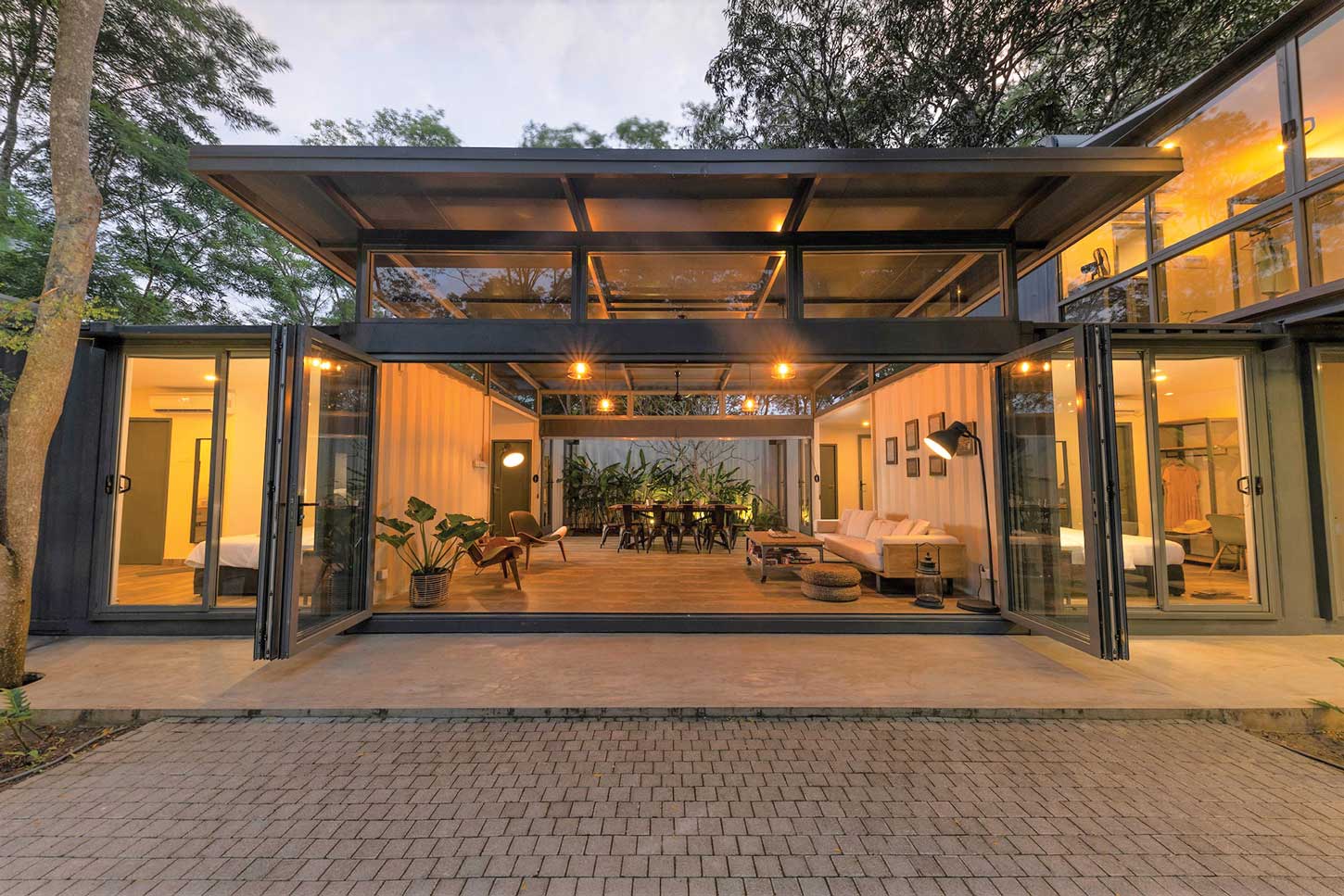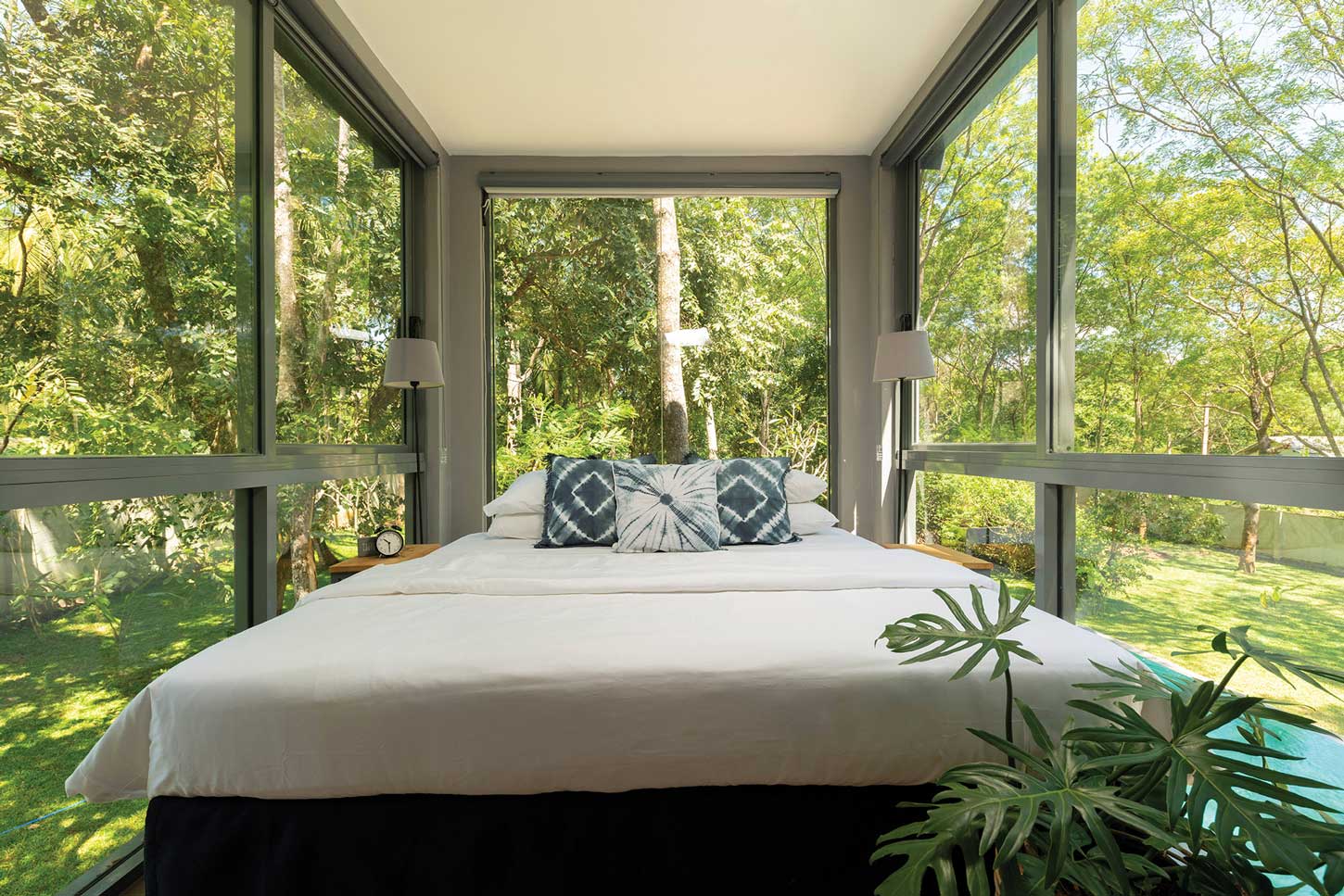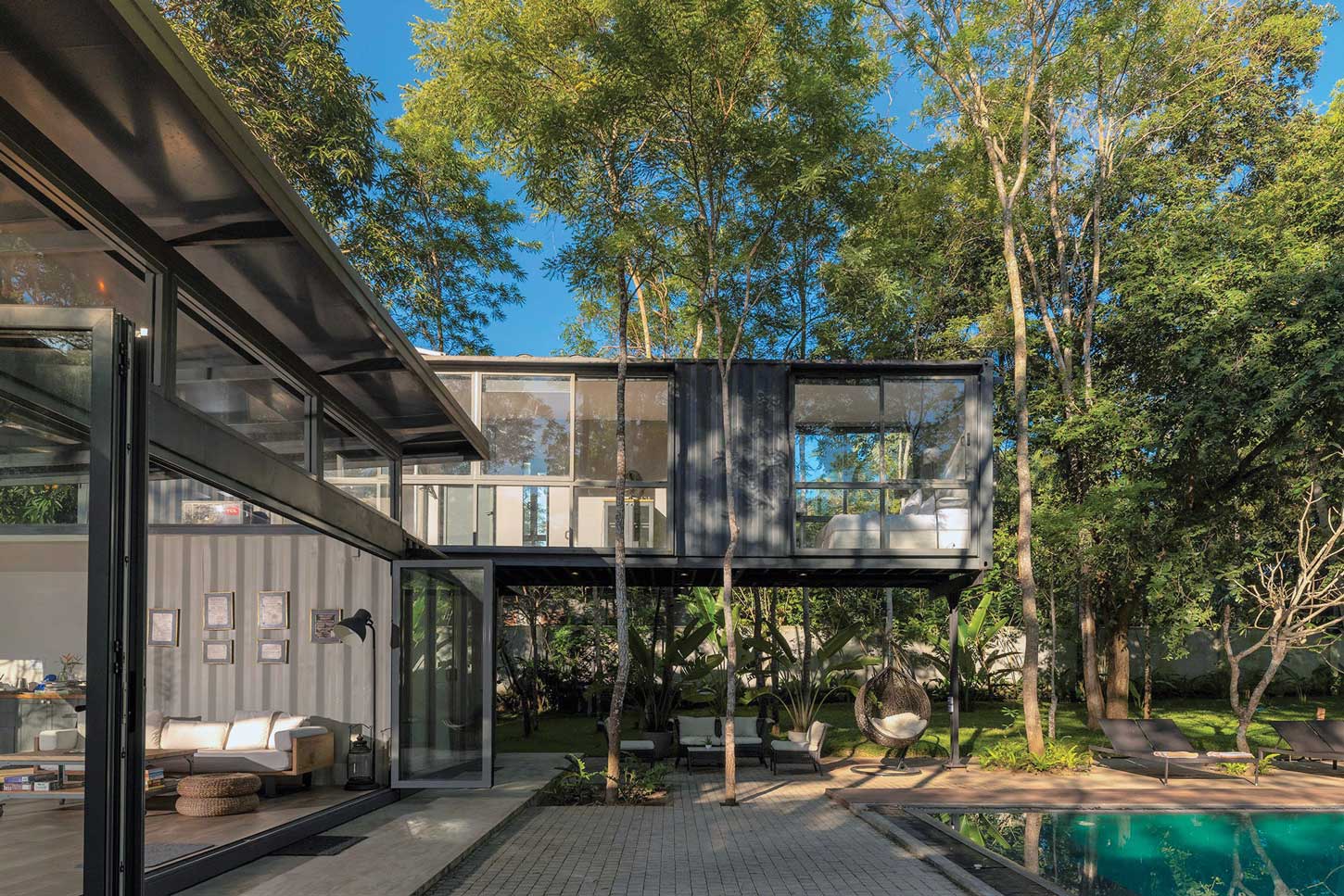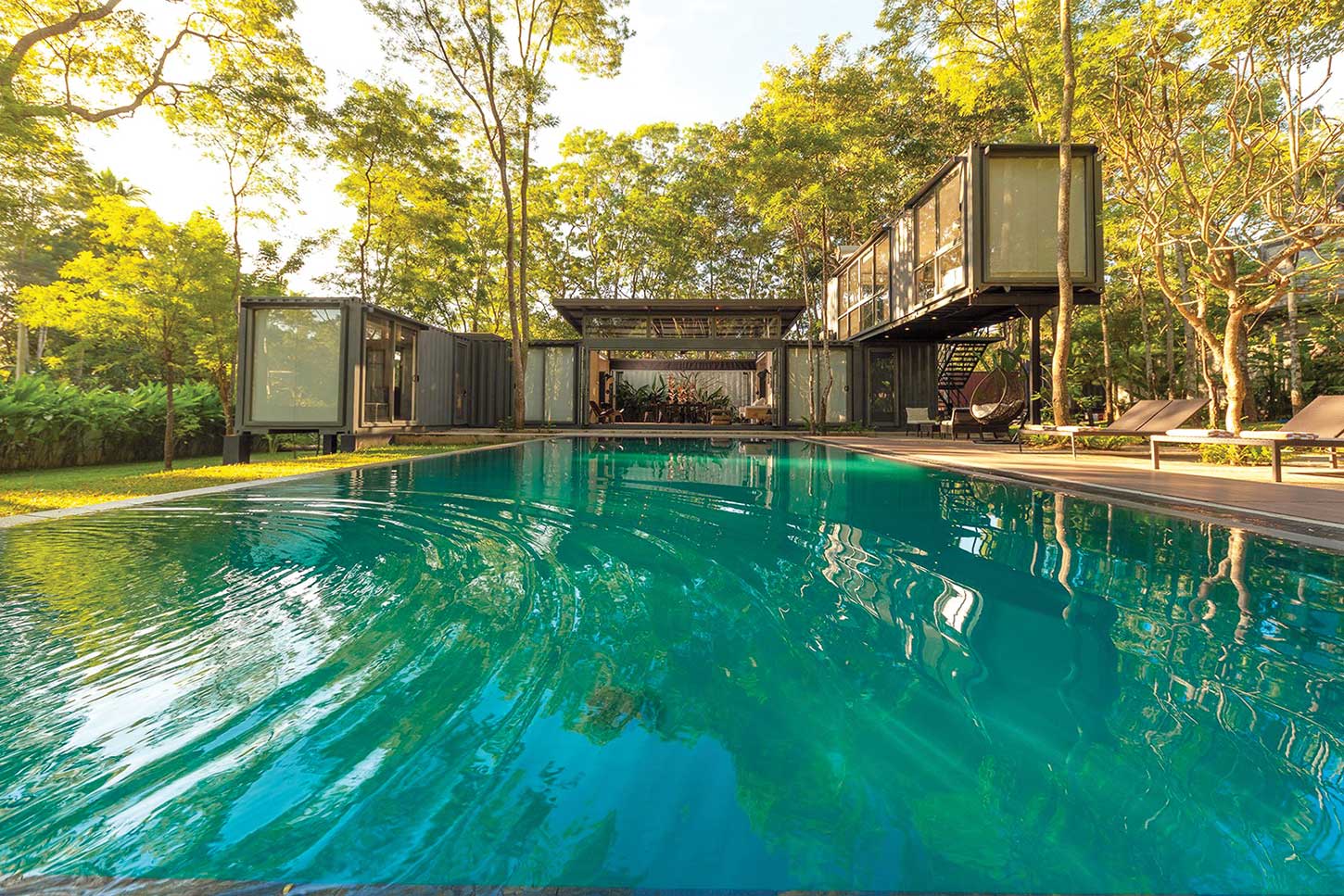HEART OF SUSTAINABILITY
Designing spaces with user wellbeing in mind

When she received an honorary mention at the ARCASIA Awards for Architecture 2020, Malisha Kodituwakku became one of the youngest Sri Lankans to receive a commendation for The Box House, which was designed by adaptively reusing shipping containers.
With a holistic approach to design, Malisha goes beyond aesthetics to keep user wellbeing and sustainability at the heart of everything. By blurring the lines between inside and outside, she hopes to evoke a greater love and appreciation for the natural environment that surrounds her creations.
Q: Can you tell us about your approach to design?
A: I’m an improviser by nature. This trait, coupled with my love for experimenting with unconventional approaches to architecture, seems to be carving out a niche for me. I have an eye for seeing the potential that a discarded item might have, enabling me to create something beautiful with it instead of starting with a blank canvas.
My latest project is an abandoned toy factory, which I saved from demolition and converted into a luxury home. The sense of satisfaction I get from seeing ‘before’ and ‘after’ photos is unparalleled.
Q: How do architects balance design, functionality and aesthetics in today’s context?
A: It’s difficult to balance everything. But that’s what separates bad design (even if it’s beautiful to look at) from good.
Every architect has his or her own process. Mine involves getting to know my clients first – meaning their lifestyles, as well as likes and dislikes – and then I factor all that information into my design solutions.
While taking into consideration the site, its constraints and climate, I also ensure that spaces flow from one to another – much like how the user would move from one space to another. Good architecture lends itself to its users moving seamlessly while a badly designed space can hinder the efficient completion of one’s tasks.
Q: What can be done to promote environmentally appropriate design solutions?
A: Creating awareness is the first step. If clients don’t understand the impact that their buildings will have on the environment, be it positive or negative, they won’t be inclined to step outside their requirements.
Environmentally appropriate designs aren’t necessarily expensive solutions; they can be as simple as orienting your windows according to the sun’s path or having adequate natural cross ventilation. Active systems such as renewable energy are best promoted by presenting long-term cost savings and a return on investment.
Q: Do you have concerns you’d like to bring to the attention of policy makers?
A: The construction industry is one of the largest contributors to climate change.
In Sri Lanka, construction debris from demolition sites ends up as landfill; new material mining of sand and stones is largely unregulated; and little is known about renewable energy since access to such systems is limited.
Policy makers have the power to regulate this kind of destruction – by providing support to small and medium scale industries that recycle or produce rapidly renewable materials; regulating the use of harmful materials; and offering financial incentives to enable more families to switch to renewable energy.








